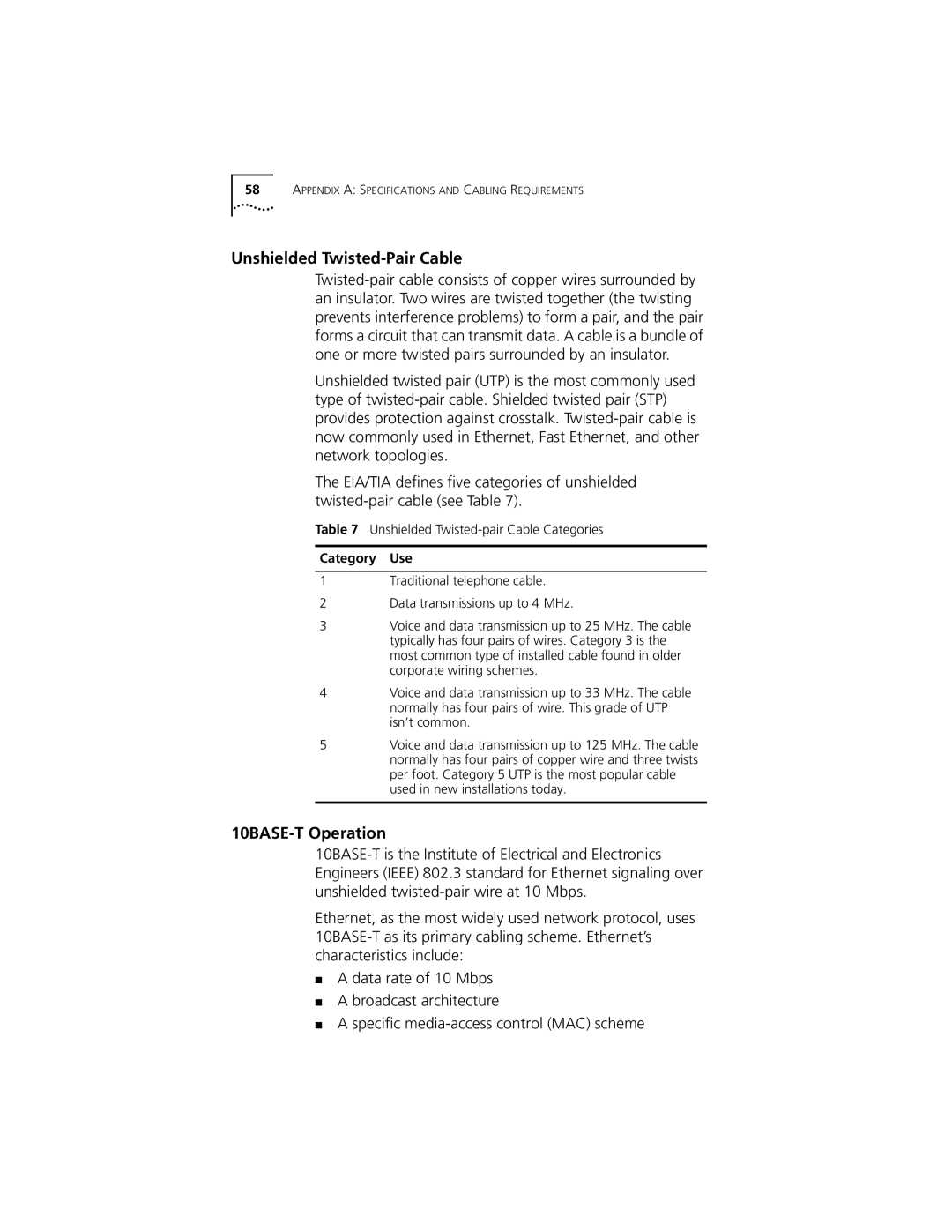
58APPENDIX A: SPECIFICATIONS AND CABLING REQUIREMENTS
Unshielded Twisted-Pair Cable
Unshielded twisted pair (UTP) is the most commonly used type of
The EIA/TIA defines five categories of unshielded
Table 7 Unshielded
Category Use
1Traditional telephone cable.
2Data transmissions up to 4 MHz.
3Voice and data transmission up to 25 MHz. The cable typically has four pairs of wires. Category 3 is the most common type of installed cable found in older corporate wiring schemes.
4Voice and data transmission up to 33 MHz. The cable normally has four pairs of wire. This grade of UTP isn’t common.
5Voice and data transmission up to 125 MHz. The cable normally has four pairs of copper wire and three twists per foot. Category 5 UTP is the most popular cable used in new installations today.
10BASE-T Operation
Ethernet, as the most widely used network protocol, uses
■A data rate of 10 Mbps
■A broadcast architecture
■A specific
